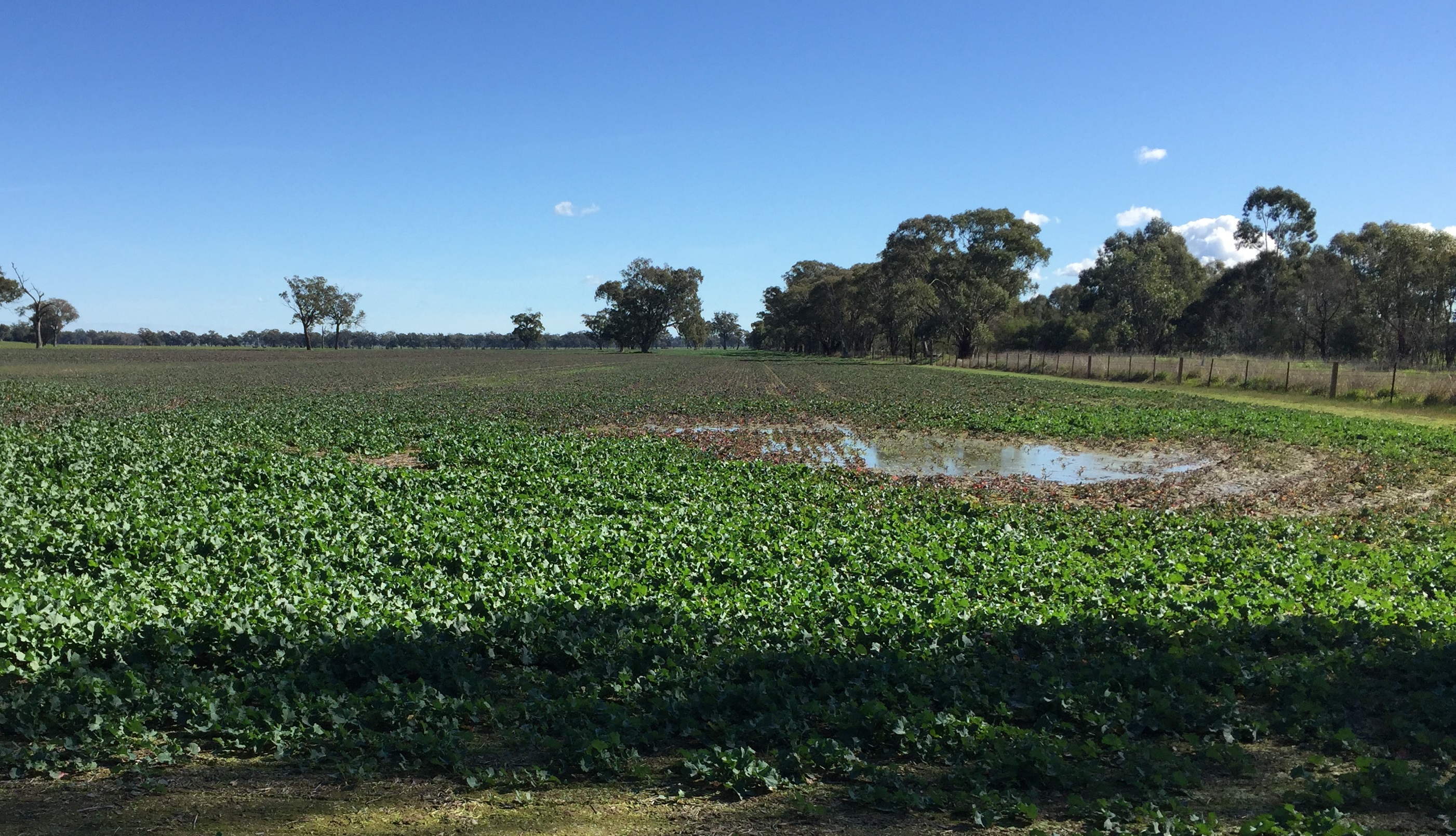
Wet weather dampens seasonal conditions
17 Aug 2016

The July wet weather has impacted on the state’s primary producers, with some winter crops heavily waterlogged.
Department of Primary Industries (DPI) Seasonal Conditions Coordinator Ian McGowen said the wet weather continued into July providing most of the state with above-average to near average rainfall.
“July provided above-average rainfall for some areas of the far west of the state, with falls between 10-50 mm. However, areas between Brewarrina and Walgett and near Tibooburra received less. Areas near Broken Hill, Bourke, Cobar and Ivanhoe received 25-50 mm,” Mr McGowen said.
“The majority of the central west, Riverina, far south, central and southern tablelands, Hunter Valley, Sydney basin and south east received 25-100 mm. Areas of the south coast, central tablelands and south west slopes received over 100 mm.
“Areas of below-average rainfall occurred over the north west, in the far northern tablelands and along the mid-north to north coast.
“Relative to historical records, rainfall during July was above average across 33 per cent of the state and near-average across most of the remainder.
“The wet conditions have restricted pasture growth in some areas, while growth improved across areas of the coast, north west, central west, Riverina and far south. Growth was generally maintained across the far west.”
Mr McGowen said topsoil moisture remained at high levels during July, particularly in the central, southern and south eastern areas of the state and across some areas of the far west.
“Relative to historical records, July topsoil moisture levels were well above average to extremely high across much of inland NSW and areas of the south coast,” Mr McGowen said.
“Significant run off occurred during July, particularly across central and southern NSW and areas of the south east. The good rainfall also produced significant run off in areas of the northern tablelands and slopes, the far west and upper Hunter Valley.
“The Bureau of Meteorology’s streamflow forecast indicates high streamflows are likely across most NSW monitoring stations during August to October.
“We have seen the early sown winter crops perform reasonably well, although the wet, cold and cloudy conditions have slowed their growth. The conditions have made grazing of dual purpose crops difficult. The late sown crops have also been affected with
waterlogging and inundation impeding growth, resulting in damage and crop loss in low lying or poorly drained areas and on heavier soils. Damage has resulted, particularly in areas of the Riverina, central west and north west.
“The wet conditions have made topdressing and weed, insect, pest and disease control difficult, with aerial application the only option in many areas.
“There has been a relatively high incidence of insect pests and diseases in winter crops in some areas.”
The Bureau of Meteorology’s rainfall outlook for August to October indicates that wetter than normal conditions are likely across NSW, with generally cooler than normal daytime temperatures.
A strong negative Indian Ocean Dipole (IOD) event is occurring in the Indian Ocean and is expected to continue into spring. Such an event increases the likelihood of above-average rainfall and cooler daytime temperatures across south-eastern Australia during winter and spring.
Download the report
Media contact: 02 6391 3686

